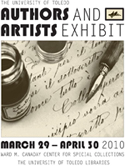Preface
It is an honor to have been asked to open this exhibit with a short talk, and I appreciate Barbara Floyd’s asking me to do this. I want to describe what we might expect of research at a relatively small university such as ours and relate that to some academic research that has been in the news lately.
The Carnegie Foundation no longer ranks doctoral granting universities, since that might hurt our self esteem. But they do group them into three categories, which are effectively rank-ordered, and we’re in the middle group (“research universities/high activity”). We’re not in the “very high” research activity group, which contains all the usual suspects and a few surprises, and we’re not in the “doctoral/research” category, which contains many schools I had not heard of before. This ranking, or categorization, is about as accurate as such things can be, and I want to propose that being in the middle is a good thing. It gives us great freedom to do the kind of research we want to do, rather than following trends. Now there are two tricky parts about trendiness: one is that ideas have to start somewhere, and the other is that research by its nature is subject to trends. What I mean is that people at the most prominent research universities—not the great majority of “very high activity” research universities, but the best half dozen or so places—have the brainpower and freedom to do as they please. But below that stratospheric level, much research is normal science, in the terms of philosopher of science Thomas Kuhn. It picks up on ideas disseminated from those places at the tippy-top, and pushes them forward. This is natural, but as a consequence in those other very high research activity places bright people expend considerable energy and resources on follow-the-leader exercises. They have to, because that’s where the money is, and they know such projects are what journal and press editors and referees expect to see. And so the forces of trendiness are built into much research at the highest powered universities.
Our status as a middle ranking research university confers a considerable advantage on us as researchers. We are free to work on relatively popular topics—and maybe find a new angle—if we want, but we are also free to focus on topics that the herd has completely overlooked in their rush to the trough. The penalties for falling short simply aren’t that large: at UT your friends will still have lunch with you even if you don’t get that NSF/NIH/NEH grant. And the potential rewards are considerable—not so much in monetary terms perhaps, but in those terms that drew active researchers into academia in the first place, namely, the ability to influence the path of our discipline’s conversations. By my experience, we typically have the resources we need to execute such research—such as this excellent library. What we need is the desire to follow our hunches and interests, no matter how far off the beaten path, and see where they lead.
I want to point out a particular aspect of the UT Libraries that I have found invaluable, and that is the Government Documents section downstairs from the Canaday Center. In the late nineteenth and early twentieth centuries the data management capacity of federal and state governments struck a very happy medium for the present-day economic historian. They were able to collect and store large amounts of data, but lacked the software to analyze them. As a result, many of those government documents hold line-by-line responses to surveys because that is all the government could do with the information it collected. These studies have enabled me to publish several articles on Philippine demography early in the American period, and have given several of my students fine projects for their M.A. paper. Our library has many excellent scholarly surprises, for those who like to follow hunches and browse through the stacks.
As you can see in the documents and works of art displayed in the cases here, many of our colleagues have followed those hunches and executed productive research programs. As a result, our colleagues have produced that new knowledge that is worth notifying fellow scholars elsewhere about. What you will find in the display cases of this exhibit are the fruits of the imaginative, diligent labor of a group of scholars and artists who have taken full advantage of the university’s openness to research. They have pushed back the boundaries of ignorance in a variety of fields, and I have no doubt that our colleagues at other universities—including the more discerning faculty members at those “very high” research activity universities—will be reading these publications with great interest.
Dr. John Murray
Professor of Economics
The University of Toledo
